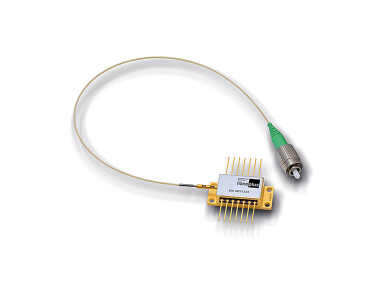Environmental Laboratory
Fast Pandemic Detection Tool Ready to Fight Flu
Oct 04 2009
Agilent Technologies (USA) announce researchers are developing new tools for rapidly characterising biological pathogens that could give rise to potentially deadly pandemics such as Influenza A (H1N1).
The first tool, an automated genotyping system, is a joint effort between Los Alamos National Laboratory, the University of California at Los Angeles (UCLA) School of Public Health and Agilent. This system will be utilised in the Global Bio Lab at UCLA and will use high-throughput technology for automated global-public-health surveillance.
The automated genotyping system, built to specification by Agilent, was delivered to Los Alamos in late May for verification of design and capability testing. The $1.7 million BioCel Automation System was designed in collaboration by Los Alamos and UCLA researchers, and professionals at Agilent’s Automation Solutions division, previously known as Velocity11. The system will be able to automatically determine the genetic sequence of viruses such as influenza hundreds of times faster than any other method available today.
By using this system and future high-throughput tools in pandemic response mode, public-health officials will be able to rapidly and reliably determine the strain of a virus, allowing more time for mitigation or containment strategies to be employed if necessary. Moreover, these BioCel systems will be useful in research mode for monitoring animal populations for the emergence of new and potentially deadly pathogens before the pathogens are able to infect humans. The UCLA Global Bio Lab will become part of the High Throughput Laboratory Network (HTLN). When built out, the network will provide an international and interconnected capacity that enables uniformity in testing methods - reducing the potential for errors or confusion arising from variable testing methodologies currently used.
“As the recent outbreak of the swine flu shows, we need to do a much more extensive and thorough job of surveillance,” said Dr. Tony Beugelsdijk, leader of the HTLN project at Los Alamos National Laboratory. “This program will provide the world with the tools for this task.”
“This system is the next-generation tool to rapidly and accurately test and identify biological pathogens in mass quantities of samples,” said Nick Roelofs, vice president and general manager of Agilent Life Sciences Solutions Unit. “Capable of performing tests 100 times faster than any current method, it will provide reliable, real-time data to the global health community. Given current health concerns about the swine flu, the system addressees an immediate and vital need in the public health arena.”
Agilent will deliver the system to UCLA, where researchers will operate the system for public health research and surveillance, and train others to use the new tool. If necessary, the system has surge capacity and the ability to test samples in response to a pandemic should the need arise.
Digital Edition
AET 28.4 Oct/Nov 2024
November 2024
Gas Detection - Go from lagging to leading: why investment in gas detection makes sense Air Monitoring - Swirl and vortex meters will aid green hydrogen production - Beyond the Stack: Emi...
View all digital editions
Events
Nov 26 2024 Paris, France
Nov 27 2024 Istanbul, Turkey
H2O Accadueo International Water Exhibition
Nov 27 2024 Bari, Italy
Biogas Convention & Trade Fair 2024
Nov 27 2024 Hanover, Germany
Dec 02 2024 London, UK












.jpg)






